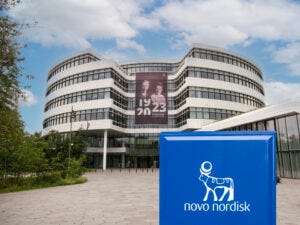October 27, 2023

Oligonucleotide-based therapies have the potential to accelerate every stage of its drug development effort, according to healthcare company Novo Nordisk.
Marcus Schindler, executive vice president of research and early development at Novo, talked about oligonucleotide development during his presentation at the TIDES oligonucleotides and peptide therapeutics conference in May this year.
“We are at a turning point in our trajectory … we have worked for close to a century on insulin innovations. … But more recently we have opened our lens,” he said, citing cardio-metabolic diseases as an example.

DpeositPhotos/oleschwander
And part of the company’s process has been to refocus on new therapeutics, particularly expanding in the field of oligonucleotides.
“If you look at it just five years ago, the majority — more than 90% of our [pipeline] projects — worked with proteins and peptides as potential therapeutics. So that was the modality of choice,” Schindler said.
“Now that is changing, and a significant portion of my pipeline now is oligonucleotide, which is RNAi based. A larger proportion … is small-molecule based and sizable portion still on proteins and peptides.”
Discovery speed
The rationale for expanding the focus of research is speed to market, according to Schindler, who said “it’s really to do with building a toolbox to accelerate everything that we do in drug discovery,” Schindler said.
“So first and foremost, we are taking what we call a human-centric approach to understand complex biology. We start with datasets and experimental models that mimic the one species we’re interested in. And that is humans.”
He explained that, in contrast to other discovery efforts where rodent models predominate, Novo Nordisk uses representative human datasets to find candidate drugs more effectively.
“There’s something fundamental here we need to change by starting with human datasets, by interrogating those datasets, and then building very bespoke hypotheses out of those datasets,” Schindler said.
Human datasets sources include internal sources, publicly available trial results, and various biobanks established worldwide, according to Schindler, who added that new technologies like AI are helping researchers analyze the information.
“We are seeing the advancements in artificial intelligence and machine learning that are really helping us get better at finding potential new targets and understanding how they could correlate to disease progression or even causality,” Schindler said.
He reiterated that Novo Nordisk is actively expanding the range of therapies it is working on through investments and knowledge acquisition.
“We also are keen to build a toolbox of treatment modalities, of course, building on proteins and peptides, but we’re also investing heavily in cell therapy and taking first steps in RNA and gene therapies. And then I already mentioned RNAi,” he said.
Toolbox
The expansion into oligonucleotide-based drugs was prompted by a reappraisal of Novo Nordisk’s technical capabilities, Schindler said.
“Just to double down now on RNA therapeutics … we actually started with a very simple gap analysis to say, ‘With the tools that we have at hand — the treatment modalities — what is the target space that we can address?’”
The results were eye-opening, according to Schindler, who said the analysis revealed the firm lacked the ability to hit targets inside the cell wall.
“Roughly speaking, there are 5,000 extracellular targets around. We can mimic those, [and] we could block those with antibodies. But the majority of targets are intracellular, and with our current technologies, we had no good way to address those targets. And that was a severe limitation of our ability to act.”
As a result, Novo Nordisk grew its toolkit to allow it to develop therapies for these intracellular targets.
“There are many ways you could do this, but we chose an RNA in particular because we feel this area of programmable medicines is where you can, with high fidelity, actually knock down a target,” Schindler said.
“Also, the technology is really interesting and will enable us to broaden our horizon and deepen our target discovery efforts.”
This realization prompted Novo Nordisk’s 2019 partnership with RNA developer Dicerna and the subsequent acquisition of the company.
“We had close to two years together working in a partnership, and throughout this time it actually became very evident that Dicerna is not only a great partner, but they’re actually also in command of a technology that could be extremely important for us in the future.”
About the Author
You May Also Like




